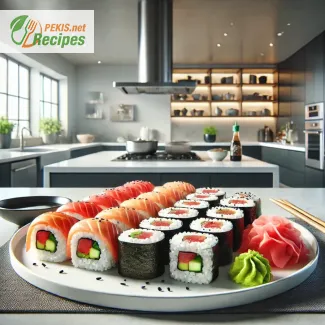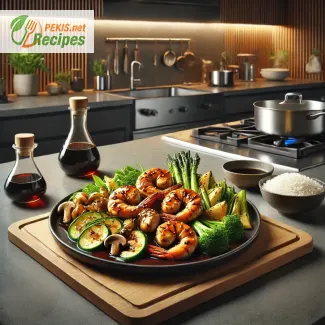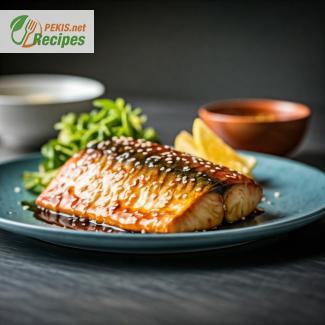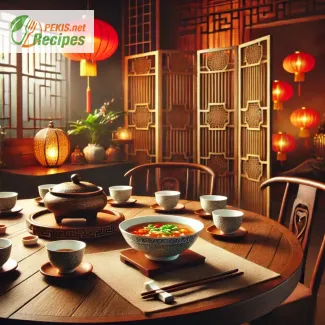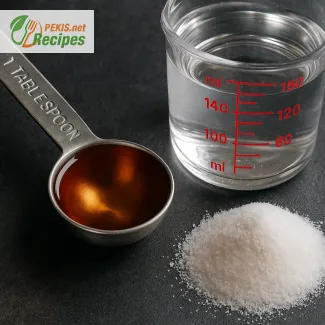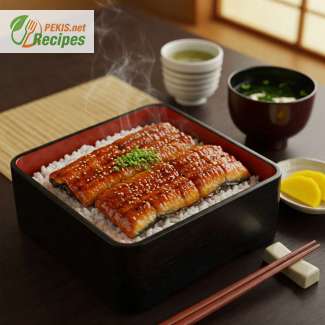
The Exquisite Art of Preparing Unagi: A Japanese Delicacy
A Culinary Treasure from Japan
Unagi, or freshwater eel, is one of the most revered delicacies in Japanese cuisine. This tender, succulent, and richly flavored dish has captivated food lovers worldwide, offering a perfect balance of umami, sweetness, and smokiness. Traditionally grilled over charcoal and basted with a savory-sweet tare sauce, unagi is not just a meal—it is an experience.
Whether served atop a steaming bowl of rice as unadon (unagi donburi) or elegantly arranged in a lacquered box as unajū, this dish represents a centuries-old culinary tradition that celebrates the natural flavors of eel. The art of preparing unagi requires skill, patience, and an appreciation for authentic Japanese cooking techniques.
The Deep Cultural Roots of Unagi
Unagi has been an integral part of Japanese cuisine for over a thousand years, dating back to the Heian period. Originally prized for its rich nutritional value and believed to provide stamina and energy, unagi became a symbol of vitality and strength. Even today, it is a beloved dish during Doyo no Ushi no Hi, a special summer day when the Japanese indulge in unagi to replenish their energy and combat the summer heat.
Beyond its nutritional significance, unagi holds a prestigious place in traditional Japanese dining. High-end restaurants, known as unagi-ya, specialize in meticulously preparing and serving eel, often following secret recipes passed down through generations. From Kyoto’s refined kaiseki cuisine to Tokyo’s bustling food markets, unagi remains a culinary treasure enjoyed across Japan.
The Masterful Preparation of Unagi
What makes unagi so special is its unique preparation process. Unlike other grilled fish, eel requires an expert’s touch to enhance its natural flavors while ensuring a silky, melt-in-your-mouth texture.
- The Traditional Filleting Technique
In Kansai (Osaka) style, unagi is slit down the belly, reflecting the merchant class’s openness and directness. In Kanto (Tokyo) style, the eel is slit along the back, a technique rooted in samurai customs. - Steaming vs. Grilling
Kanto-style unagi is first steamed to remove excess fat, resulting in a lighter, more delicate texture. In contrast, Kansai-style unagi is grilled immediately, creating a richer, crispier bite. - The Signature Tare Sauce
A carefully crafted tare sauce—made with soy sauce, mirin, sake, and sugar—is essential for achieving the distinct umami depth of unagi. This sauce is brushed over the eel multiple times while grilling, allowing it to caramelize into a glossy, flavorful coating.
The Best Ways to Enjoy Unagi
Unagi can be savored in multiple ways, each offering a unique experience:
- Unadon (Unagi Donburi): A comforting bowl of rice topped with grilled eel and drizzled with tare sauce, perfect for a quick yet indulgent meal.
- Unajū: A more refined presentation served in a lacquered box, often enjoyed in traditional restaurants.
- Hitsumabushi: A specialty of Nagoya, where unagi is eaten in three ways—first as is, then mixed with condiments, and finally with dashi broth for an umami-rich ochazuke.
Elevating the Experience: Pairing and Accompaniments
To fully appreciate unagi, it is best paired with light, complementary side dishes:
- Pickled vegetables to contrast the richness of the eel
- Miso soup for a warm, umami balance
- Steamed rice to absorb the luscious tare sauce
- Japanese sake or green tea to cleanse the palate between bites
Unagi is not just a dish—it is an expression of Japanese craftsmanship and culinary philosophy. Whether enjoyed in a high-end restaurant or prepared at home, its irresistible combination of smokiness, sweetness, and umami makes it an unforgettable experience.
- Prepare the Tare Sauce: In a small saucepan, combine mirin, soy sauce, sake, and sugar. Heat over medium-low, stirring until the sugar dissolves. Bring to a gentle simmer and cook for 5-7 minutes until the sauce thickens slightly. Remove from heat and set aside.
- Prepare the Eel: If using fresh eel, clean and fillet it. If using pre-packaged frozen eel, thaw completely and pat dry with a paper towel.
- Grill the Eel: Preheat a grill or broiler to medium-high heat (around 200°C / 400°F). Lightly oil a grill rack or baking tray to prevent sticking.
- First Grilling: Place the eel fillets skin-side down and grill for 5-7 minutes, until lightly browned.
- Apply the Sauce: Brush the eel generously with the tare sauce. Continue grilling for another 3-5 minutes, flipping and basting two to three times until the eel is glossy and caramelized.
- Serving: Place the grilled unagi over a bed of steamed rice, drizzle with extra tare sauce, and sprinkle with sansho pepper if desired.
Enhancing the Classic Unagi Recipe for a Perfect Culinary Experience
Choosing the Right Eel for Superior Flavor
One of the most crucial elements in preparing unagi is selecting the right type of eel. The best unagi is freshwater eel (Anguilla japonica), which has a delicate, fatty texture that makes it ideal for grilling. However, not all eels are equal, and choosing high-quality eel can significantly enhance the dish’s final taste.
If you want to take the flavor and texture to the next level, opt for wild-caught eel, which has a richer, more complex taste than farmed eel. Wild eels tend to have firmer flesh and a more pronounced umami depth, making them perfect for traditional Japanese cooking.
For those who prefer a sustainable option, consider using responsibly farmed eel, as overfishing has become a major concern. Some chefs experiment with alternative fish like catfish as a substitute, which, while not traditional, offers a similar fatty, flaky texture when grilled with tare sauce.
Refining the Tare Sauce for Deeper Complexity
The tare sauce is the heart of the unagi dish, as it provides the rich umami balance between sweetness, saltiness, and smokiness. While the classic tare is made with soy sauce, mirin, sake, and sugar, small modifications can dramatically improve the depth of flavor.
- Adding Dashi: For a more complex umami base, incorporating a small amount of dashi stock enhances the sauce’s savoriness, making it more authentic and refined.
- Aged Mirin: Instead of regular mirin, using hon mirin (authentic, aged mirin) deepens the natural sweetness without the need for extra sugar.
- Caramelizing Sugar: Rather than dissolving sugar directly into the sauce, try caramelizing it first for a richer, more intense depth.
- Double Reduction: Simmering the tare sauce twice—letting it cool and reducing it again—creates a thicker, more concentrated glaze, ensuring each brush onto the eel enhances its glossy and flavorful coating.
Achieving the Perfect Grilling Technique
The cooking process significantly affects the final texture and taste of unagi. Many home cooks struggle with achieving the right balance between crispiness and tenderness, often overcooking or undercooking the eel.
- Charcoal vs. Gas Grilling: Traditional unagi is grilled over binchotan charcoal, which imparts a subtle smoky aroma. While gas grills can work, they do not replicate the depth of flavor that binchotan provides.
- Steaming for Softness: If you prefer a melt-in-the-mouth texture, use the Kanto method, which includes steaming the eel before grilling. This removes excess fat and results in a lighter, fluffier texture.
- Basting at the Right Time: Avoid brushing tare sauce too early, as it can cause the eel to burn before fully cooking. The ideal technique is to grill first, then baste multiple times in the final minutes to achieve the perfect caramelization.
Avoiding Common Mistakes in Unagi Preparation
Even experienced cooks can make small errors that impact the final dish. Here are some common mistakes and how to avoid them:
- Overcooking the Eel: Unagi should be tender and moist, not dry. Cooking it for too long or at too high a heat can lead to tough, chewy flesh.
- Using Cheap Soy Sauce: Low-quality soy sauce can make the tare sauce overly salty without adding the right balance of umami and depth. Always opt for naturally brewed Japanese soy sauce.
- Skipping the Resting Time: Letting the grilled eel rest for a few minutes before serving allows the flavors to settle and the tare sauce to absorb properly into the flesh.
- Not Using Fresh Rice: The quality of rice is just as important as the eel. Freshly steamed, high-quality short-grain Japanese rice (such as Koshihikari) enhances the dish’s overall taste and texture.
Healthier Variations and Ingredient Substitutes
For those looking for a lighter or healthier alternative, modifying the recipe can make it more nutritious without sacrificing flavor.
- Low-Sodium Soy Sauce: Reducing sodium intake can be achieved by using a low-sodium soy sauce or replacing part of it with coconut aminos.
- Brown Rice Instead of White Rice: Swapping white rice for brown rice adds fiber and nutrients, though it results in a chewier texture.
- Alternative Sweeteners: Instead of sugar, using honey, maple syrup, or monk fruit sweetener provides natural sweetness with added health benefits.
- Grilled Fish Instead of Eel: If unagi is unavailable, grilled salmon or mackerel can be a great alternative, offering a similar rich umami taste.
The Advantages of Making Unagi at Home
While many enjoy unagi at specialty restaurants, making it at home offers several benefits:
- Control Over Ingredients: Home cooking allows for the selection of high-quality, fresh ingredients without preservatives or additives.
- Customization: Adjusting the sweetness, saltiness, and smokiness of the tare sauce to personal preference ensures a perfectly tailored dish.
- Cost Savings: Restaurant-quality unagi can be expensive, while homemade versions offer the same premium flavors at a fraction of the cost.
Perfecting Unagi
Enhancing a traditional unagi recipe requires attention to detail, high-quality ingredients, and proper cooking techniques. Whether through selecting better eel, refining the tare sauce, or mastering the grilling method, each adjustment can elevate the dish to restaurant-level quality. By making unagi at home, you can experiment with flavors, improve on classic techniques, and create a truly unforgettable Japanese culinary experience.
- Contains: Soy (soy sauce), fish (eel), alcohol (mirin, sake).
- Gluten Warning: Soy sauce contains gluten.
- Gluten-Free Alternative: Use tamari sauce instead of soy sauce.
- Vitamin A: Supports vision and immune function.
- Vitamin B12: Essential for red blood cell production.
- Vitamin D: Promotes calcium absorption and bone health.
- Iron: Important for oxygen transport in blood.
- Magnesium: Supports muscle and nerve function.
- Selenium: Helps reduce oxidative stress.
- Omega-3 fatty acids: Supports heart and brain health.
- Polyphenols from mirin and sake: Contribute to anti-inflammatory benefits.

